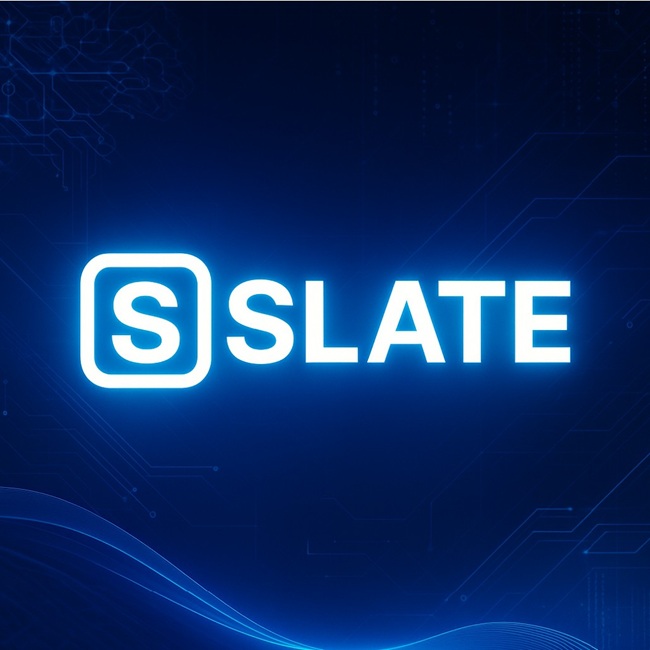Sira Print Inc. Sets a New Standard for Custom Printing in Canada
July 6, 2025From Heartbreak to Healing: How Music, Faith, and Friendship Helped Matt Waugh Find His Voice
July 6, 2025
In a world dominated by a handful of AI giants, a new contender has quietly emerged — and it’s making serious noise. Introducing Slate X, an ambitious, blockchain-powered AI platform that’s capturing the attention of developers, researchers, and decentralization advocates alike.
At first glance, Slate X may appear like yet another GPT-style chatbot, but under the hood lies something radically different. It’s not just another large language model — it’s an entire AI ecosystem built to rethink how artificial intelligence should be trained, trusted, and delivered. At the core of this revolution? A mode Slate X calls Ultra Mode — a high-stakes arena where multiple AI models debate, cross-verify, and converge on the best possible answer before delivering it to you.
Sound like science fiction? It’s not. It’s already live in demo form, and it’s turning heads.
What Is Slate X?
Slate X is a new kind of AI platform that blends next-gen large language models with decentralized computing infrastructure. Imagine the power of ChatGPT, but with a completely different back-end philosophy: one rooted in openness, distributed trust, and verifiable intelligence.
While traditional AI services are centralized in the cloud and controlled by a handful of corporations, Slate X proposes something bolder. Through a decentralized network of miners and validators, Slate X spreads both computational work and model verification across a globally distributed system — similar to how blockchain networks validate transactions. Only instead of confirming blocks, they’re confirming intelligence.
What Makes Ultra Mode So Unique?
At the heart of Slate X is its flagship innovation: Ultra Mode. This is where things get fascinating.
Rather than relying on a single AI model to generate an answer, Ultra Mode spins up multiple language models in parallel, each trained differently or optimized for different strengths. These models don’t just operate independently — they engage in real-time cross-validation. They argue. They challenge. They defend logic and question gaps in reasoning. And only after this round-table of artificial minds reach a consensus, the final answer is sent to the user.
The result? Responses that are measurably more accurate, nuanced, and resilient to hallucination.
“Think of it as peer-reviewed AI,” says one of the developers behind the project. “You’re not just trusting one model’s gut instinct — you’re getting something closer to truth-by-consensus.”
Blockchain and AI: A Natural Alliance
Where does the blockchain fit in? Everywhere.
Slate X’s AI isn’t just decentralized in philosophy — it’s decentralized in architecture. The project uses a hybrid blockchain model that serves two critical roles:
- Computation Verification – Every AI response (especially those generated in Ultra Mode) is accompanied by a cryptographic proof trail that can be verified by the network. This makes it nearly impossible for malicious actors to tamper with model output or slip in backdoors.
- Incentivized Mining – Instead of simply validating transactions, miners in the Slate X ecosystem contribute compute power to AI inference. They’re rewarded in tokens not for securing a chain, but for supporting model workloads and accuracy validation. It’s a fusion of GPU mining and AI training into a single, cooperative economy.
The more accurate, helpful, or efficient your node is in contributing to AI generation or verification, the greater your rewards.
Why This Matters
Slate X is arriving at a critical moment. As concerns grow around AI centralization, data transparency, and algorithmic bias, a project that proposes auditable, decentralized, and collaborative intelligence is more than welcome — it’s necessary.
Centralized models can be impressive, but they are inherently limited by the blind spots of their creators. Slate X flips that logic: it embraces diversity of thought — even among machines — and treats disagreement as a tool for arriving at deeper truths.
And in Ultra Mode, that disagreement isn’t just tolerated — it’s built into the design.
Early Signals of Promise
The current demo version of Slate X already boasts:
- Lightning-fast response speeds
- Markdown rendering (with streaming)
- GPT-comparable language fluency
- Enhanced factual accuracy under Ultra Mode
- Developer-ready API for custom integrations
And perhaps most importantly, the project has begun attracting a following not through flashy advertising, but through word-of-mouth among AI power users, crypto developers, and thinkers looking for the next real paradigm shift.
What’s Next for Slate X?
The team behind Slate X is currently preparing for a selective private sale, accessible only via invitation codes — a move that has already stirred buzz online, with speculative stories of people trading rare assets for access.
A public whitepaper is in the works, detailing everything from the tokenomics of the system to the technical blueprint behind Ultra Mode’s model arbitration framework. If the early glimpses are any indication, Slate X could be the foundation of a new generation of trustless AI systems.
Final Thoughts
Slate X doesn’t claim to be the biggest or most powerful AI in the world — not yet. But it might just be the most interesting one. And in a world where intelligence is becoming the most valuable resource of all, how we generate and validate that intelligence matters as much as the answers themselves.
Whether you’re an AI researcher, a Web3 developer, or just a curious explorer, Slate X is a project worth watching.
And if you can get your hands on an invite code — even better.
